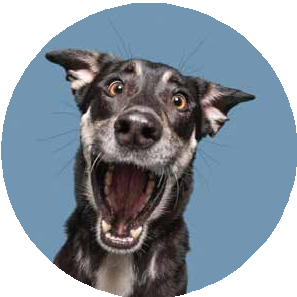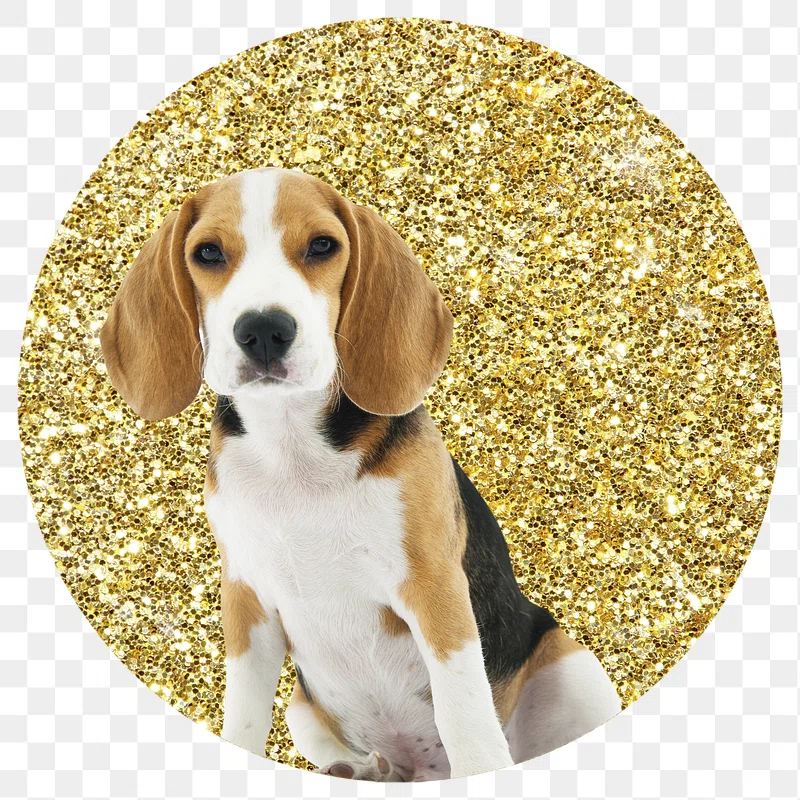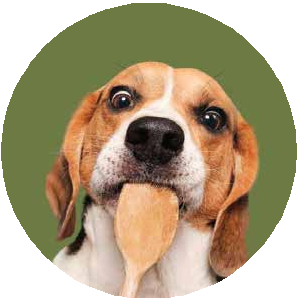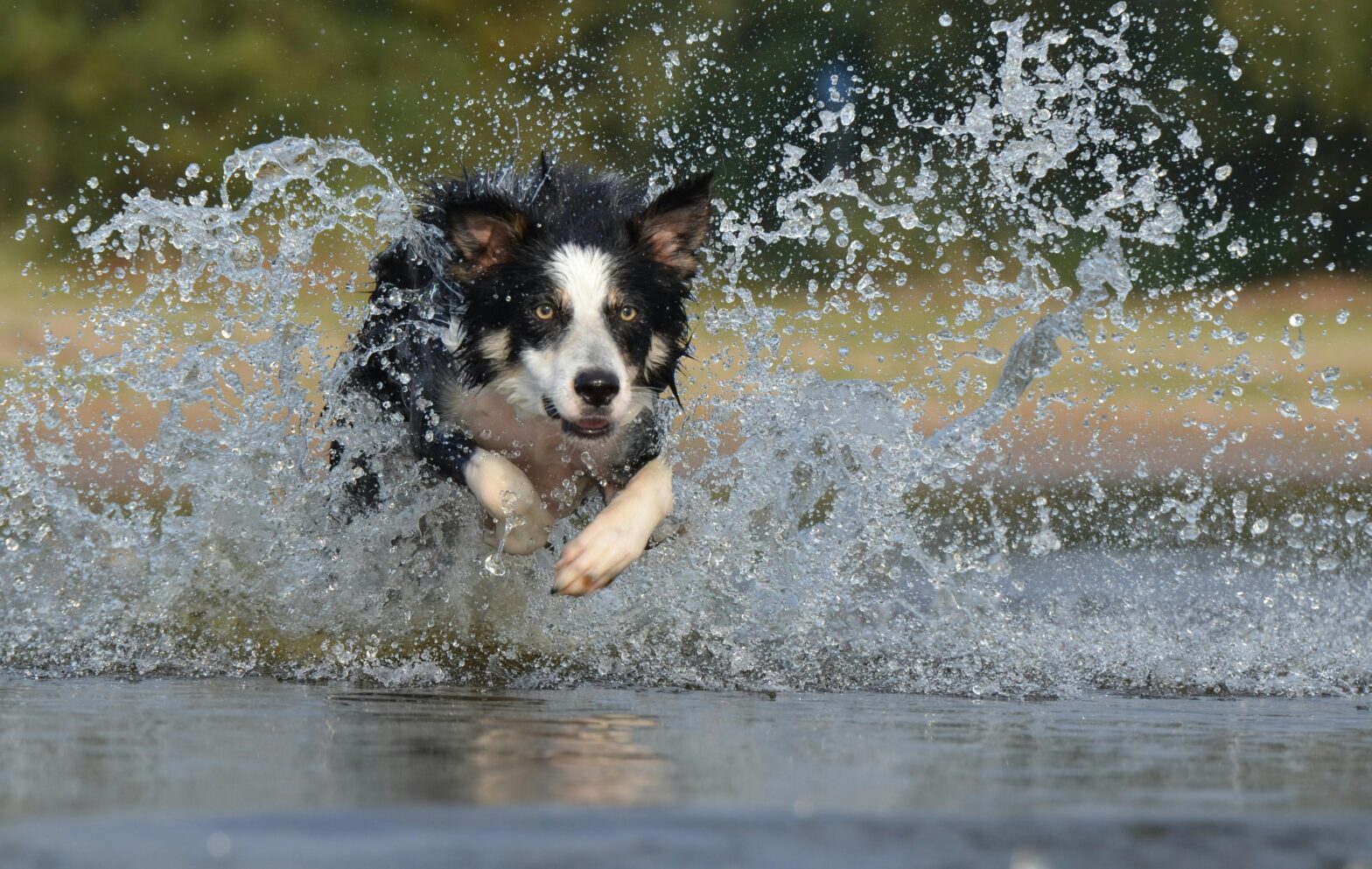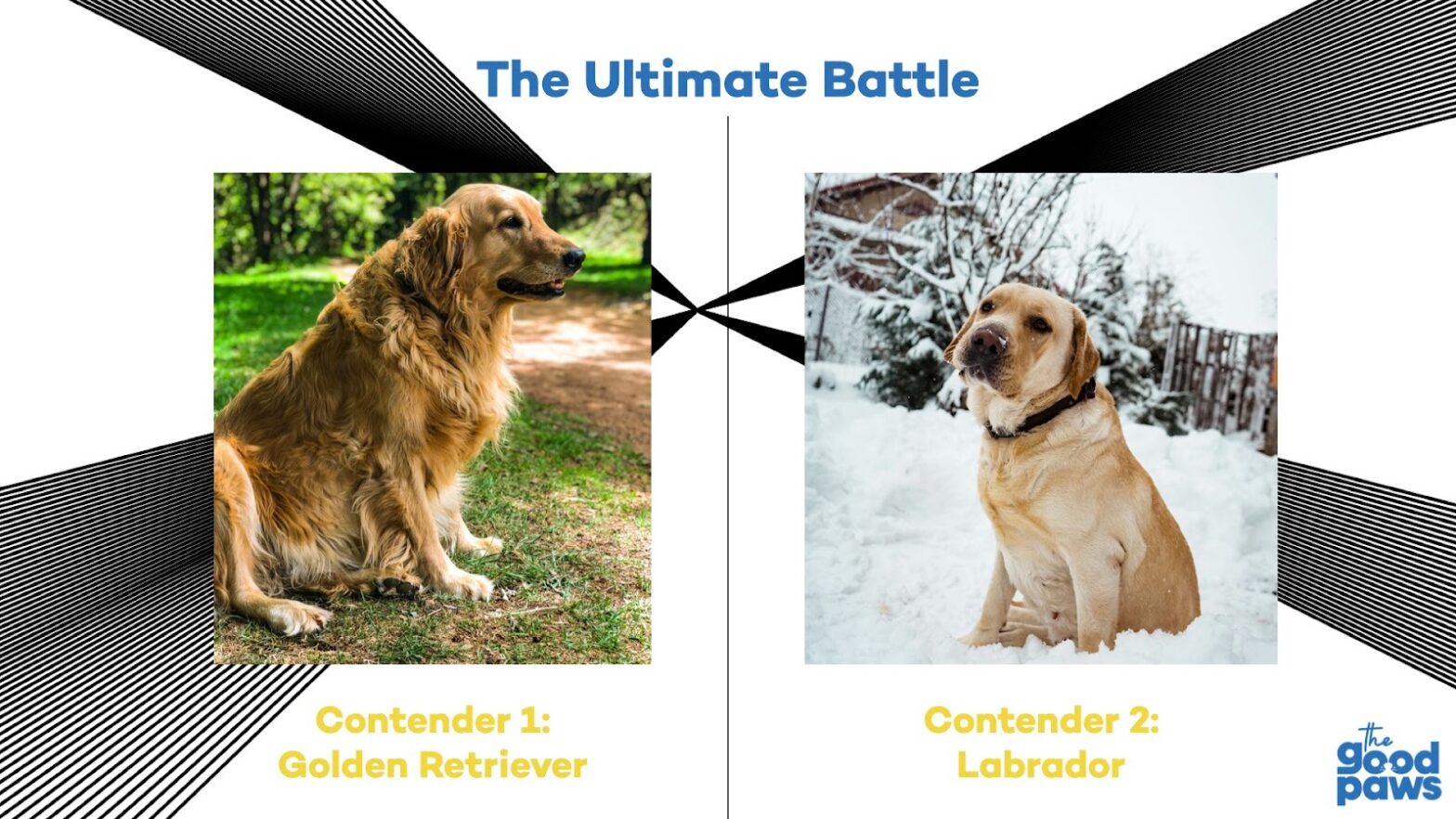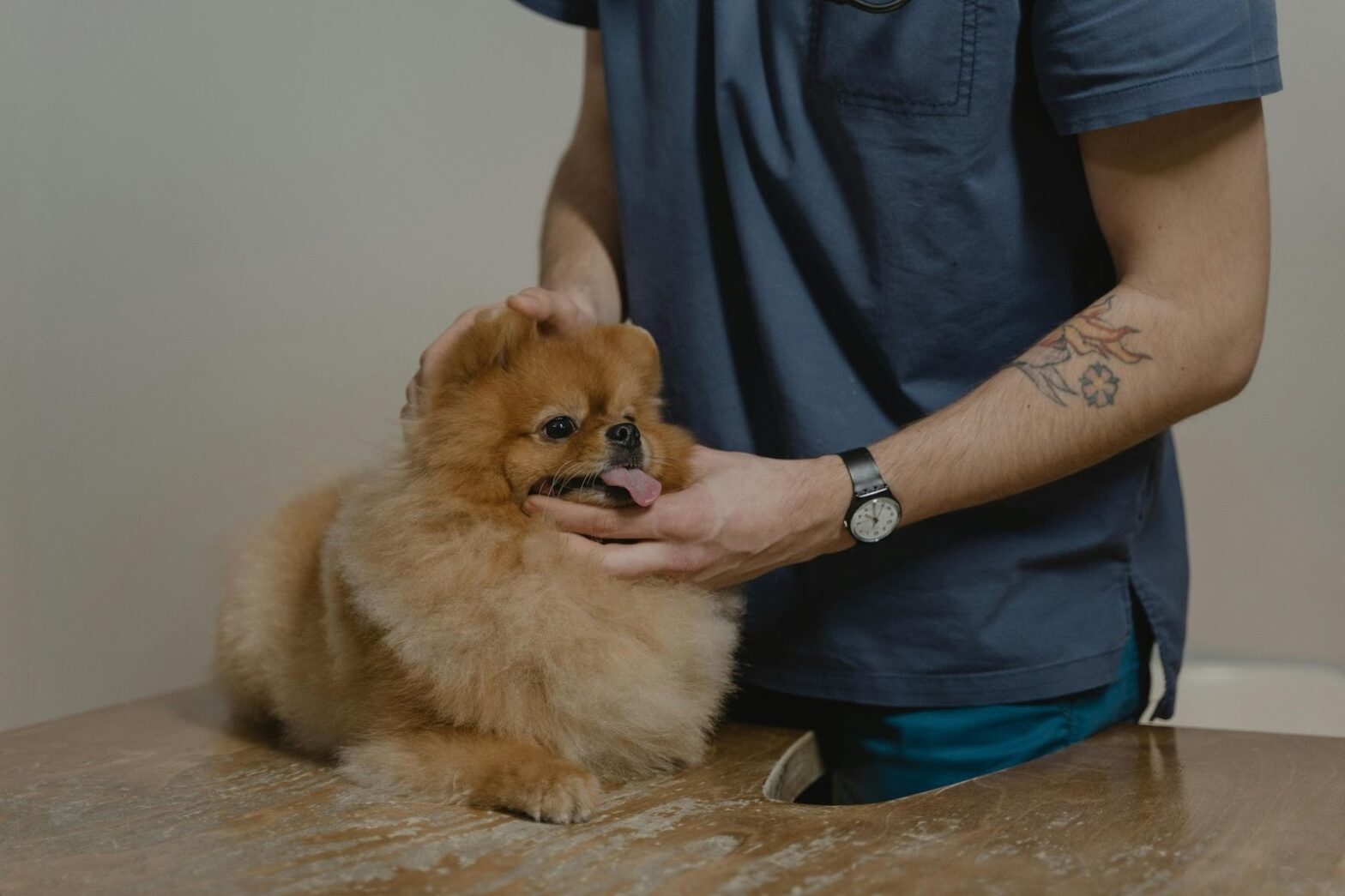This is part 3 in our three-part series on understanding your dog’s body language (read part 1 on tails and part 2 on ears & eyes).
You ever walk into a room and instantly know your dog has “thoughts”? They’re standing there with legs planted and chest out with their tail doing its own drama, basically acting like they’re auditioning for a mystery telenovela.
One second it’s “main character energy,” the next it’s “nervous extra in the background,” and you’re wondering what episode you are in right now.
That’s because dogs talk with their entire body. Every wiggle, freeze, bow, and flop is part of the script. And once you learn to read the whole performance, you’ll finally understand why your pup sometimes looks like they’re starring in a soap opera… with you as the very confused co-star.
So grab your popcorn, because in this final part of our body-language series, we’re zooming out to watch the full show.
Reading the Room

Here’s how to understand the different postures your dog might show:
Confident Dog Energy
When your dog leans forward, chest out, it’s their “main character energy”. Your pup is either curious, assertive, or feeling like they run the block. (If the body is relaxed and bouncy, think “Best Day Ever.” If it’s stiff and still, proceed with caution.) Science confirms that dogs shifting their weight forward or appearing larger is about both curiosity and possible offensive intentions, especially if paired with a raised tail or tense facial muscles.
But if their body is all loose and waggy with that super-wiggly, I-love-life movement? All green lights. Relaxed muscles, a soft mouth, and a jello-like tail mean your dog is in their happy place.
“Help Me!” Postures
When your dog looks like they’re trying to blend into the carpet—tail tucked, head low, often with sidelong glances—it’s textbook stress, uncertainty, or, honestly, “get me out of here.” A hunched, cowering posture means your dog is trying to seem small and non-threatening, which is a strategy to avoid conflict.
Now, if your dog plops belly-up, don’t assume “rub my belly” is the only message. Sometimes, yes, it’s pure relaxation. But if they’re stiff, lip-licking, or urinating, it’s a sign of major stress or appeasement.
Play Mode: Activated
The classic play bow is when your dog has their chest down, butt up, tail mid-height and wagging. If they had emojis, this would be the “Let’s play!” symbol. Studies show the play bow is one of the clearest, most intentional dog signals, used to start or re-boot play and confirm “it’s all good!” It’s so universal, even wolves and puppies know what it means.
Raised Hackles (Goosebumps… Dog Version)
Hair standing up signals adrenaline is in play. It’s called “piloerection,” and it’s your dog’s version of goosebumps. Not always bad news, but excitement, big feelings, or stress. Pay attention to the context before assuming it’s aggression.
Calming Signals
Yawns, lip-licks, slow blinks, or just freezing for a second are the little moves through which your dog says, “Let’s keep things chill, okay?” Calming signals like nose licks, turning away, and freezing have been studied and shown to reduce aggression in other dogs. They’re the ultimate peace offering.
Paw Raises and Displacement Drama
Outside of pointer breeds (who do this for work), a raised paw usually means your dog’s on the fence: curious but unsure, maybe a bit anxious.
If your dog is excessively yawning, lip licking, or doing those “shake-offs,” it’s not always about sleep, snacks, or a sudden itch. These are classic signs of a dog feeling tense and trying to calm down. Dogs often do these when uncomfortable, bored, or stressed in social situations.
Putting It All Together
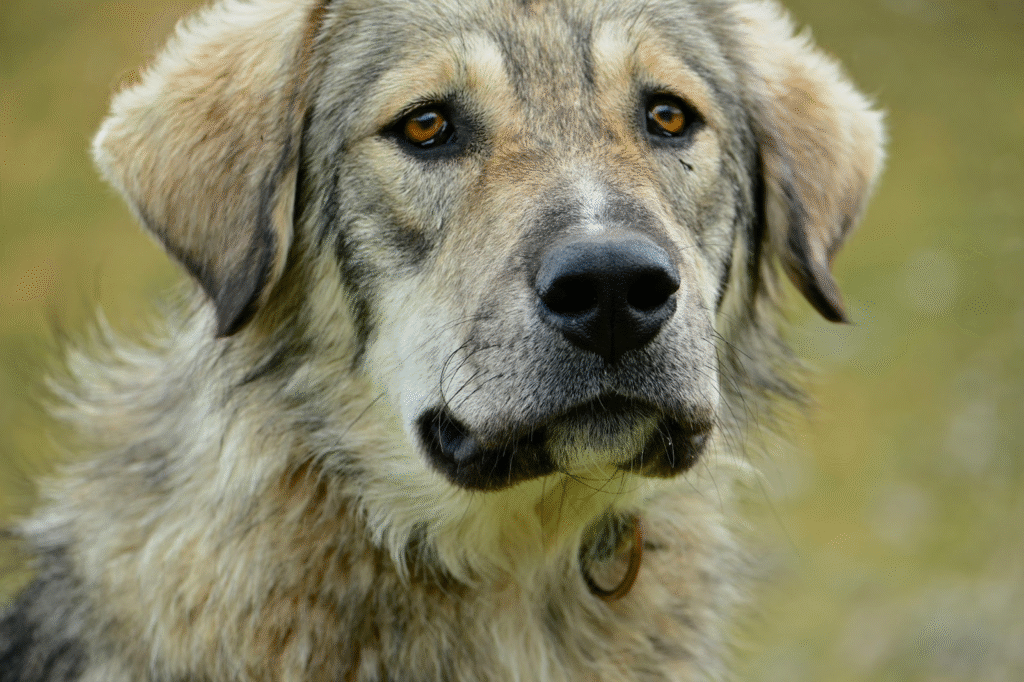
Next time you’re watching your dog, ask yourself:
- Where is their weight: forward, even, or back?
- Is the body loose, stiff, or cowering?
- Belly-up and loose = trust; belly-up and tense = appeasement
- Classic play bow? You’ve got a real-life “let’s have fun” invite.
Remember that one signal by itself means very little. It’s the combo—tail + ears + eyes + posture—that reveals the whole emotional set. Piece all this together, and you’ll be a dog-language pro. And trust me, your canine is going to be so relieved!
Raised Hackles: Not Just a “Bad Dog” Move
Every dog parent knows the look: your dog suddenly puffs up like a furry stegosaurus: hair straight up along the back, neck, maybe even down to the tail. Don’t worry, nobody’s dog is turning into a werewolf. What you’re seeing is called piloerection, aka “raised hackles.” And no, your dog isn’t saying “let’s fight!”, at least, not most of the time.
What Even Are Hackles?
Hackles are the band of fur running from the shoulders down the spine to the tail base. When your dog’s tiny erector pili muscles contract (thanks, involuntary nervous system!), all those hairs stand at attention, just like human goosebumps. It’s completely automatic, triggered by the body’s adrenaline rush in moments of arousal or big feelings.
Why Do Dogs Puff Up?

Raised hackles don’t mean “aggressive dog incoming!” Science and trainers say that raised hackles are a signal that’s your dog’s body yelling, “I have feelings right now!” Those feelings might be:
- Fear: New dogs, strangers, sudden noises can cause fear and flip the hackles switch in a heartbeat.
- Excitement or Play: Yep, some dogs “puff up” before a wild game of zoomies or when their favorite person comes home.
- Uncertainty or Alertness: Hackles rise when your dog is hyper-focused on something: alert, assessing, sometimes curious or conflicted.
- Defensive Mode: In tense situations, raised hackles (plus a stiff body and hard stare) can be your dog’s way of saying, “don’t mess with me,” but this is just one possible context.
- Surprise: Sudden changes—think a cat jumping out or a dropped pan—can flip the switch too.
What Raised Hackles Look Like (And Why Context Is Key)
- Across the entire spine: Dogs with full-body arousal (major feelings) get the whole mohawk from neck to tail.
- Just shoulders or rump: Sometimes, only parts of the hackles rise, which can mean the arousal is more specific or fleeting.
- Paired with other signs: Are the ears back? Tail tucked? Body stiff or loose? Reading the whole “sentence” of body language is important. Raised hackles alone tell you nothing; context tells the story.
You must look at the rest of your dog: is the tail wagging softly or stiff and high? Are they bouncing playfully or freezing? It’s the combination that tells you if your pup’s about to play, bolt, or ask for space.
The Breed Dilemma
A ridge of fur is more dramatic on short-coated dogs than fluffballs, but every breed is built with this mood-mohawk feature. Some will puff up at the drop of a pin; others save it for truly big moments.
What Should You Do When You See Hackles?
Don’t panic! Pause and read your dog’s other body cues.
If your dog is stiff, staring hard, and hackles up, gently guide them away and diffuse the situation.
If your dog is wiggly, ears forward, tail wagging, you might just be seconds from the world’s fastest zoomies.
Raised hackles are your dog’s “big mood” alert. The more you practice reading them in context, the clearer your dog’s feelings will get, and the more relaxed you’ll be, too.
Reading Aggressive Signals: When Things Get Serious
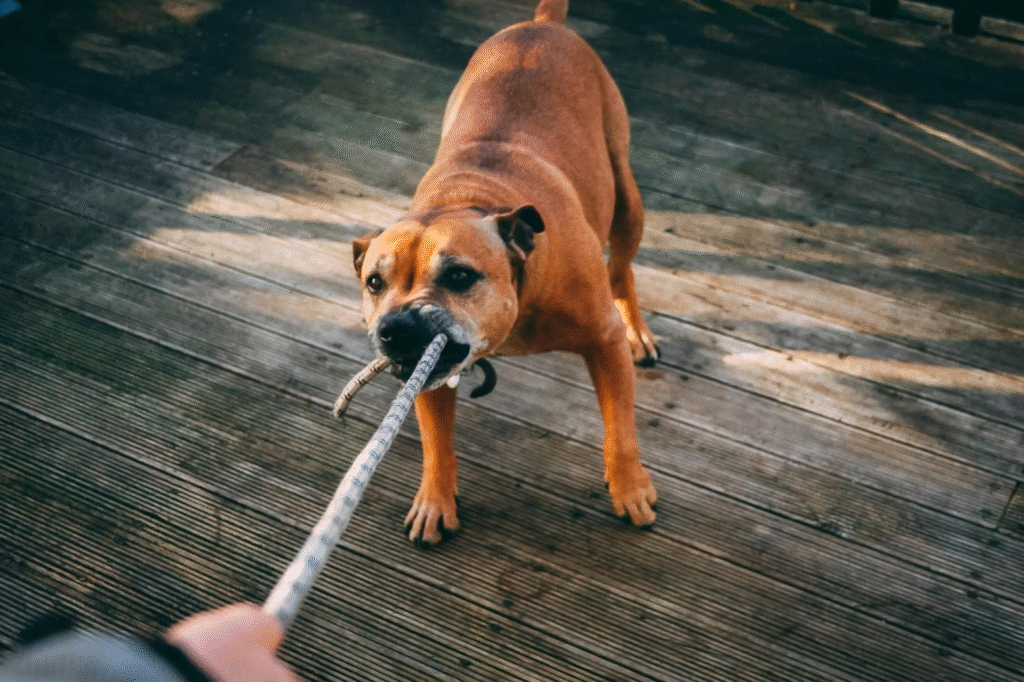
Alright, so you’ve cracked the code on tail wags, decoded floppy ears, and know your calming signals from your play bows. But what about those moments when your dog’s body language switches from “let’s have fun” to “let’s not”?
Aggression: A Communication Tool, Not a Dirty Word
Let’s get one thing right out of the way: aggression isn’t “bad dog” behavior. It’s only one way dogs say, “I’ve had enough,” or “back off, this is too much.” Most of the time, aggression—growling, snapping, snarling—is your dog’s last resort, a giant flashing neon sign that something’s wrong and the subtle warnings didn’t work.
The awesome part is that we can learn how to spot the early warnings so it never gets that far.
The Early Red Flags (A.K.A. The “Back Off” Playlist)
Dogs rarely go from chilling to lunging with zero warning. Here’s what comes before that dramatic moment:
- Tense, Still Body: Your normally wiggly, animated pup suddenly goes stiff, almost statue-like. Zero jiggle, lots of intensity.
- Weight Shifts Forward: Leaning in, head down, legs stiff; this is “don’t mess with me” energy.
- Hard Stare: Not the sweet, gaze-into-your-soul look, but laser-focused, unblinking, almost daring. Scientists and trainers agree that sustained hard stares are textbook intimidation.
- Ears Forward or Flat: Depending on the dog, aggression comes with ears pinned tight to the head or ramrod-straight forward. It’s all about maximum alertness and posturing.
- Mouth Tension and Lip Curls: Tightly closed mouth, lips drawn back, you may see the infamous toothy snarl or wrinkle across the muzzle.
- Raised Hackles: Hello mood-mohawk! Piloerection shows arousal, not necessarily aggression, but watch this in context.
- Tail Up and Still (or Tight Wag): A tail carried high, straight, and barely moving is a major signal. If the wag looks staccato, short, and tense, it’s not a happy wag.
- Low Growl, Snarl, or Air Snap: “I’ll escalate if I have to!” This is the clearest audible warning.
The “Ladder of Aggression”
Behavior pros describe the “ladder of aggression”: dogs try polite avoidance (looking away, freezing, yawning, lip licking) before stepping it up to big gestures. If all those signals are ignored—maybe in a tight space, or with a stranger—they may freeze up, vocalize, and finally lunge or bite.
Most dog bites happen because humans (or other dogs) missed those early peace offerings.
Context Is Everything
Guarding a toy or resource? The body gets stiff, head lowers, lips curl.
Feeling cornered or trapped? Watch for tail tucks, crouching, then sudden defensive lunge.
Dog-on-dog drama? Direct stare, hackles up, tails high or tightly tucked.
What to Do When You See Aggressive Signals
Don’t punish the warning! Growls, snarls, and freezes are your chance to intervene. If you scold these out of your dog, you’re literally removing their ability to safely communicate.
- Give space: Drop what you’re doing, step back, or gently redirect with treats if that works in the moment.
- Stay calm: Never escalate, even if you’re stressed. Deep breaths help both of you.
Aggression as Communication
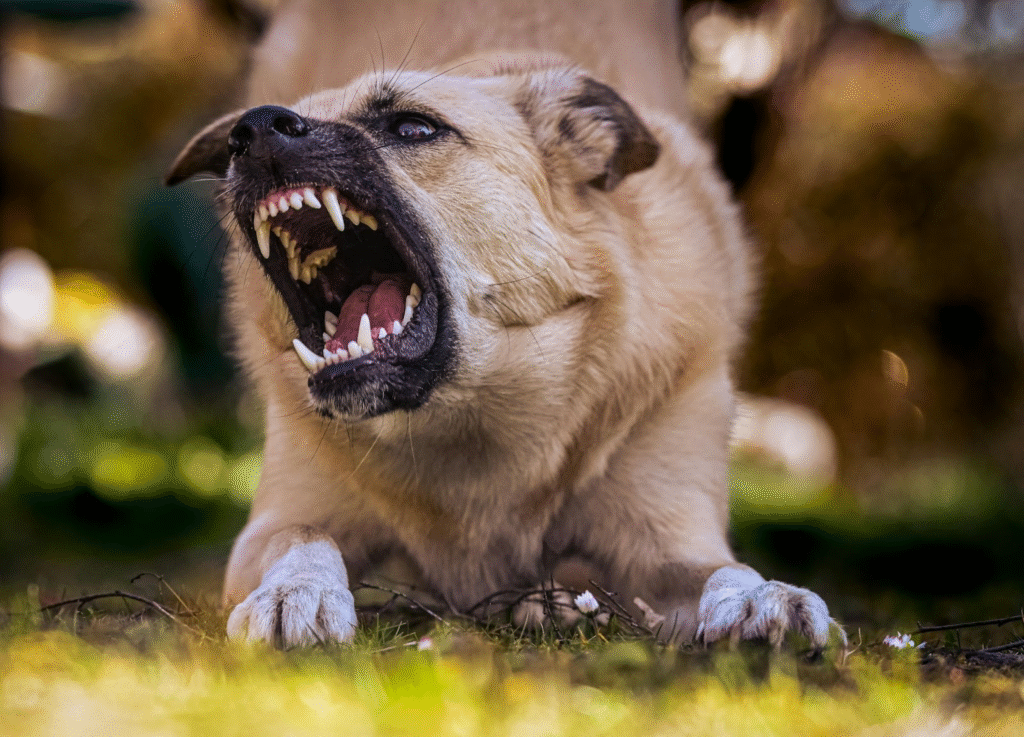
Above all, remember that aggression is just information. Your dog doesn’t “turn bad” overnight. They’re telling you they’ve hit a wall. The goal is to listen, prevent, and build trust by catching the conversation before it turns into a crisis.
Spot the early cues, defuse the drama, and you’ll be the hero of your dog’s story. Empathy, not punishment, keeps you both safe.
Why There’s No “One Size Fits All” in Dog-Land
Always remember that context is everything. You can’t just spot a wag or a yawn and call it a day. You have to read the whole dog, and the whole situation.
Imagine a dog wagging its tail. It could be happy-go-lucky, could be “I’m nervous,” could be on the verge of jumping into the pond for the 800th time today. Observe all the signals: posture, energy, environment, what happened before, and even your own body language. Science confirms that canine signals only truly make sense when interpreted in light of external factors and all other body signals together.
- Congruency matters: When all signals (tail, ears, eyes, posture) agree, you can bet that the dog is feeling what you think. Mixed signals mean the dog is in two minds, or, let’s be honest, just not supporting your agenda.
- Busy environments = confusing signals: Noticed how your dog gets more reactive or erratic during a wild kids’ birthday party or in a packed park? Unpredictable scenes can have dogs making split-second decisions, and their signals can flip in an instant.
- Human influence: Your posture matters. If you’re looming, rushing, or acting nervous, your pup picks up every last cue and might mirror your tension.
- Breed quirks: Some breeds (think Pugs, Bulldogs, Frenchies) have curly tails, floppy ears, or so much fur you can barely see what’s going on. They literally can’t show certain classic signals the same way other dogs do.
- Age, size, and sex: Puppies, adults, and seniors all have their own styles. Small dogs, for example, statistically show more “active” (sometimes misunderstood as reactive) behaviors, while larger breeds may read as more reserved or chill, even in tense moments. Male and female dogs even express stress and vocalizations a bit differently in various contexts.
Reading the Whole Story
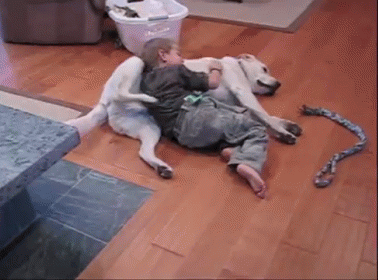
Don’t read a single wag, yawn, or paw lift in isolation. Zoom out. Piece together body posture, facial expression, tail and ear position, environment, and your own vibe. Know your dog’s normal. “Out-of-character” is usually more important than sticking to charts.
You’re not just “owner” or “pack leader,” you’re the person who truly gets them. Not because you memorized a chart or understood an article, but because you see, hear, and respond to your dog as the full, complicated, feeling-filled individual they are.
So next time your dog “acts out” or gives a look you don’t quite get, remember that it’s an opportunity, an open invitation to connect, to learn, and to build a life together rooted in understanding. The more you read, respect, and respond to their signals, the stronger your bond becomes and the more your dog will trust you to have their back.
Congratulations, fluent hooman. Welcome to the real dog-parent club.
Now go out there and enjoy the kind of partnership every pup (and every person who loves them) truly deserves.
And if you ever need a refresher, you know where to find us. After all, it’s all good.
Still have any queries regarding your dog’s behavior? Want to share that weird tale from the morning jog a few months ago? Come chat with us in the comments!

